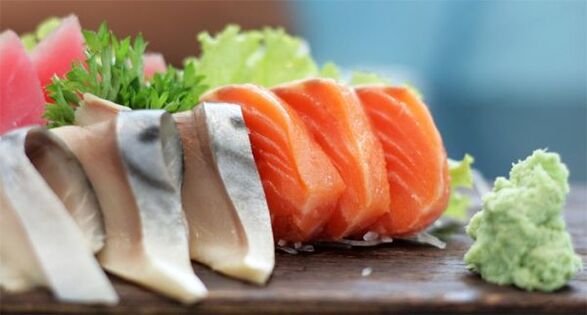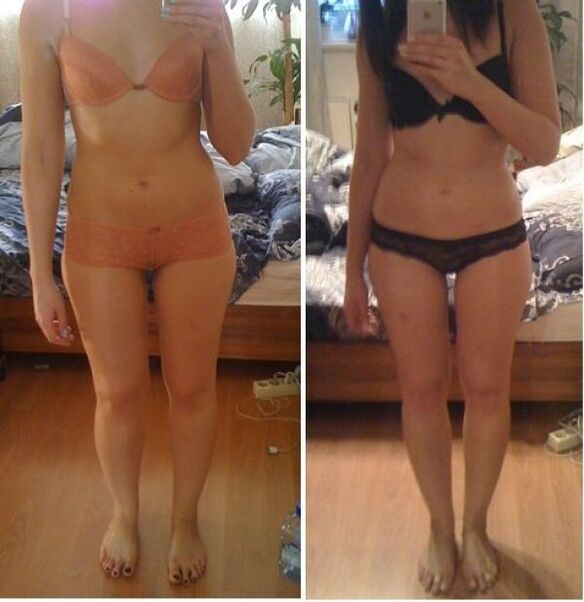Although rolls and sushi may seem dietary and low in calories compared to other dishes, the 14-day Japanese diet is not based on them. It received its name because its observance required the endurance and courage of a noble samurai. She's really complicated. But the efforts are worth it: on this diet, kilograms are really lost, and in the future you can easily switch to a classic healthy diet, which will not allow youregain what was lost.
Japanese weight loss method: menu and recommendations
The Japanese 14-day diet is very strict. It will make you give up your usual preferences, "cleanse your receptors" and make you enjoy the taste of healthy foods. See it not as torment or overcoming obstacles, but as an introduction to something unfamiliar that has been under your nose all your life.
The main principles of this diet are:
- salt is strictly prohibited, as are all other spices;
- The menu is very strictly regulated. Furthermore, it is prescribed not only what to eat, but also exactly how much. Measured in grams;
- In your view, you cannot replace products even with similar products;
- Multivitamins should be supplemented throughout the diet, because due to dietary restrictions, the body does not receive enough necessary nutrients;
- Active sports in parallel with diet are prohibited;
- Exiting the diet is carried out according to strict rules. If they are neglected, the body will be under a lot of stress, which can lead to many problems.
If you follow all the rules, in 2 weeks your stomach size will decrease, and after leaving the diet you will eat less food. The main thing is to continue to eat well so that you don't get any more muscle tension.
Most likely, you already know what proper nutrition is: eating vegetables and dietary meat without spices. If this seems meager and tasteless to you, then the "Japanese" diet will definitely change your point of view. You'll start to taste foods that previously seemed bland and learn to enjoy the juicy crunch of vegetables.

Recently, mini versions of the Japanese diet have appeared. They are designed for fewer days so they seem more bearable. But it is not like that. After a few days of eating "Japanese style", the body will get used to it and eating will become comfortable. That is, the short version of the diet will bring the same discomfort, and then in the end, bring less weight.
There's one more trick. In the early days of using the diet, weight loss is mainly due to salt excretion and water loss. And only then the stomach shrinks and metabolism changes, which allows you to maintain the resulting shape for a long time. If you stop at eliminating water and salt, they will simply return to their original position when you return to your normal diet.
Contraindicated
The Japanese diet creates emergency conditions for the body, thereby destroying fat reserves. It is not particularly diverse and many important substances will be temporarily missing. Therefore, contraindications to the Japanese diet:
- pregnancy and lactation period. Children must be provided with all the necessary substances without restriction; deficiency will lead to developmental disorders. So wait until your baby starts eating on his own;
- problems with the circulatory system: a large load falls on it during the diet;
- diseases of the digestive and endocrine systems.
List of allowed foods
A unique advantage of the 14-day Japanese diet is that it is inexpensive. All products are sold in every store and they are not expensive compared to banned products.
It's best to go to the store before starting your diet and make your first strategic stockings. Those who have tried the described diet say that enduring the first days is especially difficult, and a tempting trip to the store can bring you down.
By the way, exiting the salt-free mode is very dangerous: the body is in a state of acute salt deficiency, and a sharp increase in salt intake is very dangerous.
So here's what you have to eat for two weeks:
- Fresh fruits low in sugar: citrus, green apples, pineapples, plums, cherries and others;
- Fresh non-starchy vegetables: white cabbage, carrots, zucchini, eggplant, tomatoes;
- Fresh tomato juice;
- Unrefined virgin olive or sesame oil;
- Yogurt without fillers, kefir;
- Cheese has minimal fat content but is unsalted;
- The fillet is extremely lean, skinless. Beef, chicken, fish;
- Egg. In terms of weight, one chicken egg corresponds to 5 quail eggs;
- Black coffee. You cannot add anything to it, replacing it with a soluble substance is undesirable;
- Tea is also the simplest and most natural thing;
- Clean drinking water without gas;
- Cookies from rye bread slices without dried fruit.
By the way, if you add lemon juice to unsalted food, you will get a very interesting taste, which will make it easier for you to wean yourself from spices.

Prohibited products
Strictly speaking, all products not mentioned in the algorithm are prohibited. To ensure safety, we will prescribe exactly what is best to take out of the refrigerator and within easy reach before starting the "Japanese" diet.
- Illegal fruits and vegetables;
- Salo;
- milk product;
- Bacon;
- Baked goods and sweets;
- Any store-bought drinks, especially alcoholic drinks;
- Fragrance additives.
Full menu
It's hard to forget that the 14-day Japanese diet is one of those regimens that is really difficult to follow. Having decided to go through with it, persevere throughout the allotted time, do not interrupt or shorten it.
The algorithm assumes three meals a day without snacks and snacks (w – breakfast, o – lunch, y – dinner).
- Monday
- h – Coffee;
- o – Cabbage salad, 2 eggs, juice from a few tomatoes;
- y – 200 g fish from the steamer.
- Tuesday
- h – Coffee and 1 cracker;
- o – Steamed fish, cabbage salad;
- y – 100 g beef, kefir;
- Wednesday
- h – Coffee and 1 cracker;
- o – A few eggplants, stir-fried with a little oil;
- y - 200 g roast beef, cabbage salad, a few eggs;
- Thursday
- h – Carrot salad;
- o - 200 g steamed fish, tomatoes;
- y – Sour fruit;
- Friday
- h – Carrot salad;
- o - 200 g steamed fish, tomatoes;
- y – Allowed fruit;
- Saturday
- h – Coffee;
- o – Grilled chicken fillet, carrot and cabbage salad;
- y – 2 eggs, raw carrots;
- Sunday
- h – Tea;
- o - 200 g beef from the oven;
- y – Any items offered this week, your choice, but not fruit.
At first, sticking to your diet can be difficult. But over time the body will get used to it and switch to a new way of operating. The dish will show its true flavor. You will lose the habit of feeling full after eating. The first results of the Japanese diet will become noticeable. This diet does not force you to starve but gradually reduces the volume of your stomach, helping you not overeat.
So you've tasted victory, the work continues. Here is the schedule for next week (w - breakfast, o - lunch, y - dinner).
- Monday
- h – Coffee;
- o – Half a kilo of grilled chicken fillet, cabbage and carrot salad;
- y - Anything, except fruit, from last week;
- Tuesday
- h – Carrot salad;
- o - 200 g steamed fish, a few tomatoes;
- y – Sour fruit;
- Wednesday
- h – Coffee;
- o – Salad of carrots, eggs, cheese slices;
- y – Sour fruit;
- Thursday
- h – Coffee with crackers;
- o – Grilled or raw zucchini;
- y - 200 g roast beef, cabbage salad, a few eggs;
- Friday
- h – Coffee;
- o - 200 g steamed fish, cabbage salad;
- y – 200 g grilled beef, yogurt;
- Saturday
- h – Coffee;
- o – Cabbage salad, 2 eggs, tomatoes;
- y – 200 g steamed fish;
- Sunday
- h – Coffee;
- o – 200 g steamed fish and cabbage salad;
- y – 200 g of beef and a glass of kefir.
Cabbage salad consists of exactly 2 ingredients: crispy cabbage and 20 g of oil. Carrots - respectively, from carrots and 20 g of butter.
I want to note how convenient the Japanese diet is for men. Even people without any culinary talent can prepare their own food without burdening their loved ones with new rules.
Characteristics of a salt-free diet
In a salt-free diet, the body will fall into an abnormal, almost extreme, salt deficiency. This is one of the main secrets of its effectiveness. But for everything to work correctly, you need to follow important principles:
- Drink as much as possible. You will have to drink at least 2 liters of clean water every day in small portions. If you do 1 glass at a time, you will get about 8 approaches.
- It is best to drink a glass of water first thing in the morning, before breakfast. Better yet, take a few spoonfuls of fiber with this glass. This is a nutritional supplement sold in any pharmacy. Regular use in this way will improve bowel function and enhance the effectiveness of the diet even further.
- Don't stretch your diet even if you think you can. 14 days is the maximum time the human body can do without sodium chloride.
- It is allowed to gradually add salt in the last days of the diet. You cannot immediately salt the food to its usual taste, the first time, literally add a few crystals of salt and slightly increase the dosage.
- If necessary, coffee can be replaced with tea. But it's better to leave it as it is – coffee helps normalize blood pressure and provides the body with antioxidants.
Quit the Japanese diet
Within 14 days of meticulously applying the diet, you will definitely lose weight. Now your job is to return the sodium chloride properly. But it's not just about salt. The rules for transitioning from diet to normal life will allow you to maintain your new size for a long time.
- Continue eating according to the diet algorithm. Add items to the menu one by one.
- Do not increase portion sizes. Your stomach tightens a little and that's enough to fill you up. If you eat too much, the stomach wall will stretch again, the stomach will get bigger and the weight will start to return.
- Add salt carefully. Just a little at first, then gradually returns to normal levels over a few days.
- It's better to abstain from other spices for at least another month. They increase cravings and make it difficult to establish new healthy eating habits.
Diets that work often make you want to continue or return to them. But you can't do this with the Japanese diet. If you want to prolong the experiment, quit the diet wisely, add other vegetables to the diet, diversify meat dishes and you can strengthen your breakfast a little.
Return to the Japanese diet is allowed after only six months.
Evaluation of weight loss results
- "I fought bravely and was very proud of myself. By the end of the first week it became a little more familiar and then it got easier. The hardest thing was notto eat cakes and chocolates for so long. Well, I have to get used to small portions. The rest is not scary. And you know, it's been several months since I got fat. "
- "I found this diet when I was preparing to go to a wedding and couldn't fit into a dress. I tried to urgently lose 10 kg in 2 weeks, until recently no one believed in the successof this experiment! At the wedding I wore my dream dress with a perfect waist. By the way, now I've only gained a few kilos. "
- "I lost weight thanks to "Japanese" and I didn't think it was that heavy. Lost 7kg. I switched from a diet to a healthier diet than before and didn't gain weight. After 7 years, I got pregnant, and of course, I no longer had time to take care of my figure and gained 13 kg. Now I am breastfeeding and should eat what is good for the baby. As soon as we stopped breastfeeding, I will definitely go through these 14 days of asceticism again to get back in shape. I trust this diet 100%. "















































































